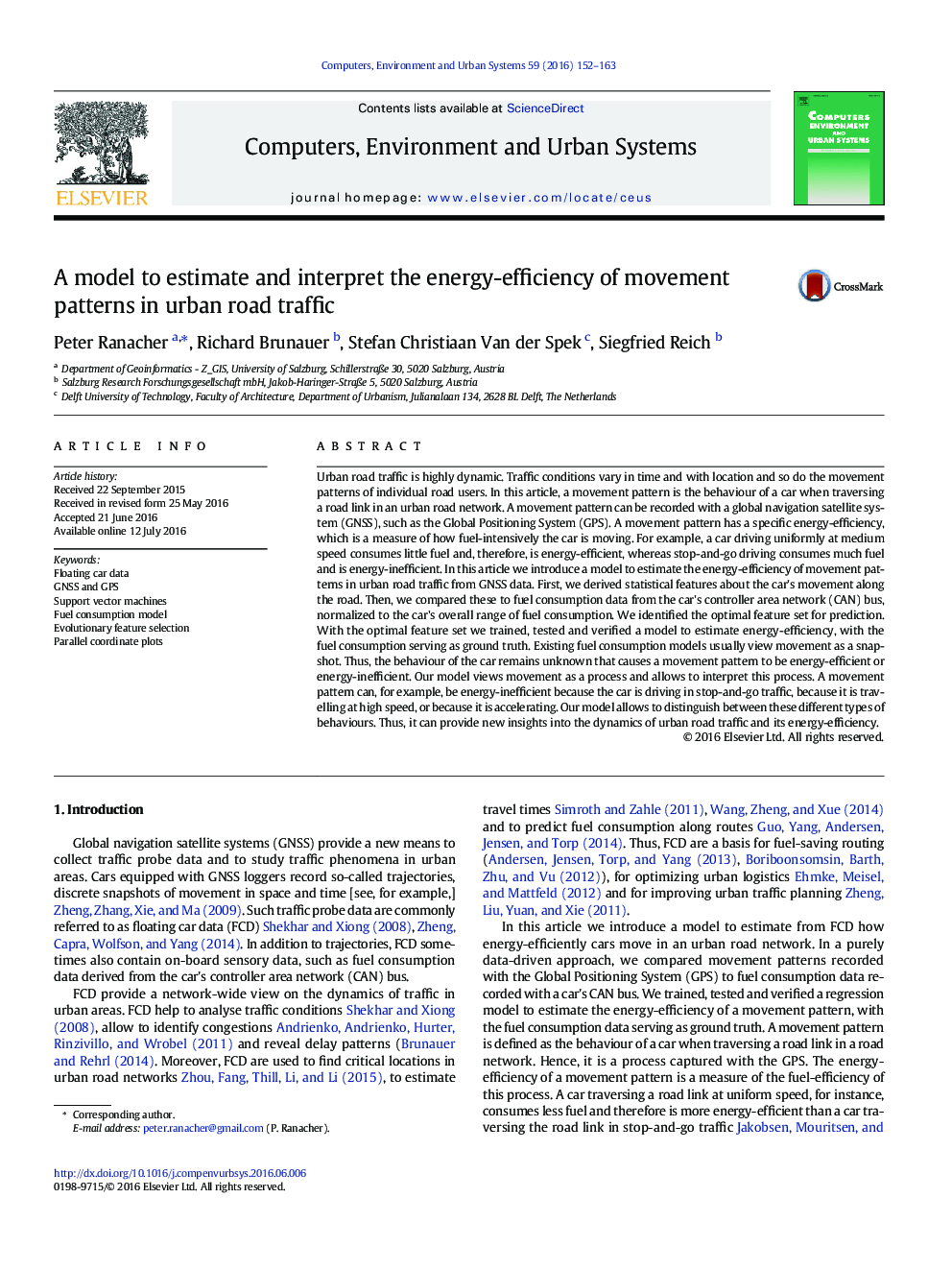| کد مقاله | کد نشریه | سال انتشار | مقاله انگلیسی | نسخه تمام متن |
|---|---|---|---|---|
| 506261 | 864883 | 2016 | 12 صفحه PDF | دانلود رایگان |
• The article introduces a model to estimate and interpret the energy-efficiency of movement patterns in urban road traffic.
• A movement pattern is the process of a car traversing a road link, energy-efficiency is the fuel intensity of this process.
• The model allows for interpreting different types of patterns, e.g. stop-and-go driving from speeding or accelerating.
• The model uses only GPS movement data and a digital surface model for prediction.
Urban road traffic is highly dynamic. Traffic conditions vary in time and with location and so do the movement patterns of individual road users. In this article, a movement pattern is the behaviour of a car when traversing a road link in an urban road network. A movement pattern can be recorded with a global navigation satellite system (GNSS), such as the Global Positioning System (GPS). A movement pattern has a specific energy-efficiency, which is a measure of how fuel-intensively the car is moving. For example, a car driving uniformly at medium speed consumes little fuel and, therefore, is energy-efficient, whereas stop-and-go driving consumes much fuel and is energy-inefficient. In this article we introduce a model to estimate the energy-efficiency of movement patterns in urban road traffic from GNSS data. First, we derived statistical features about the car's movement along the road. Then, we compared these to fuel consumption data from the car's controller area network (CAN) bus, normalized to the car's overall range of fuel consumption. We identified the optimal feature set for prediction. With the optimal feature set we trained, tested and verified a model to estimate energy-efficiency, with the fuel consumption serving as ground truth. Existing fuel consumption models usually view movement as a snapshot. Thus, the behaviour of the car remains unknown that causes a movement pattern to be energy-efficient or energy-inefficient. Our model views movement as a process and allows to interpret this process. A movement pattern can, for example, be energy-inefficient because the car is driving in stop-and-go traffic, because it is travelling at high speed, or because it is accelerating. Our model allows to distinguish between these different types of behaviours. Thus, it can provide new insights into the dynamics of urban road traffic and its energy-efficiency.
Journal: Computers, Environment and Urban Systems - Volume 59, September 2016, Pages 152–163
